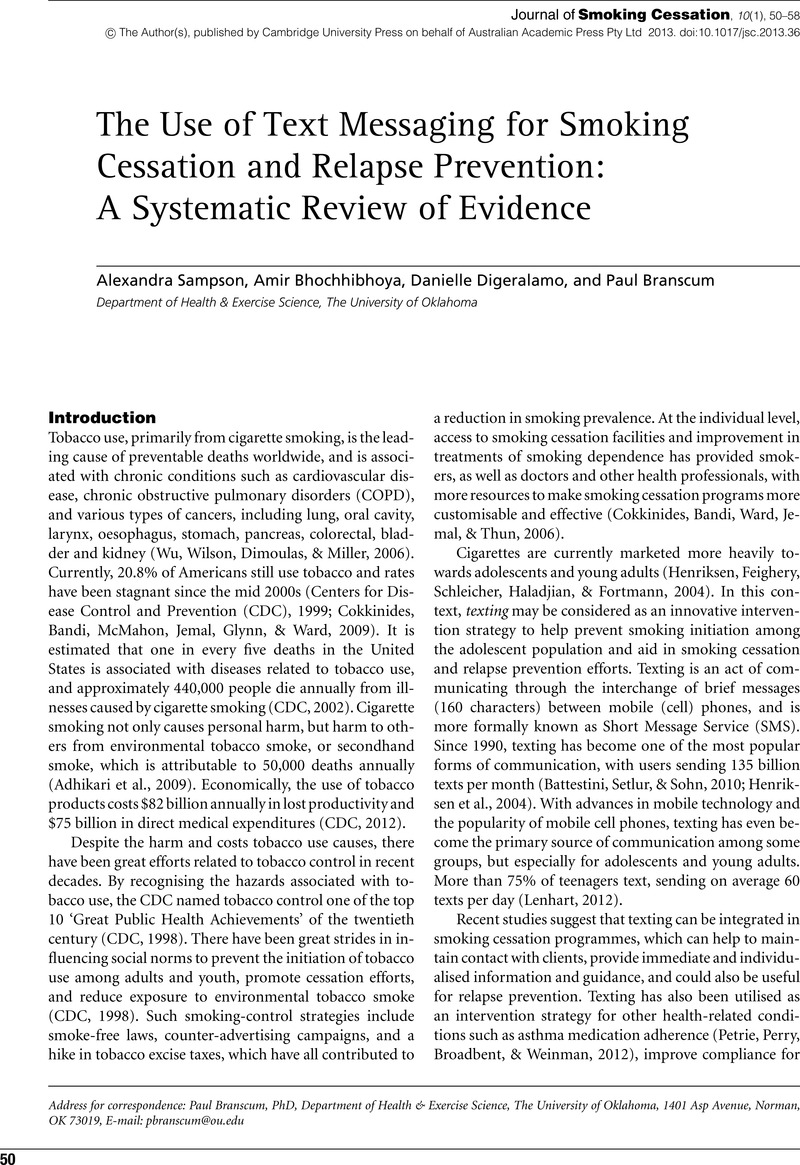Crossref Citations
This article has been cited by the following publications. This list is generated based on data provided by Crossref.
May, Robin
Walker, Frances
de Burgh, Simon
Bartrop, Roger
and
Tofler, Geoffrey H
2019.
Pilot Study of an Internet-Based, Simulated Teachable Moment for Smoking Cessation.
Journal of Smoking Cessation,
Vol. 14,
Issue. 3,
p.
139.
Asharani, P. V.
and
Subramaniam, Mythily
2022.
Handbook of Substance Misuse and Addictions.
p.
775.
Asharani, P. V.
and
Subramaniam, Mythily
2022.
Handbook of Substance Misuse and Addictions.
p.
1.





